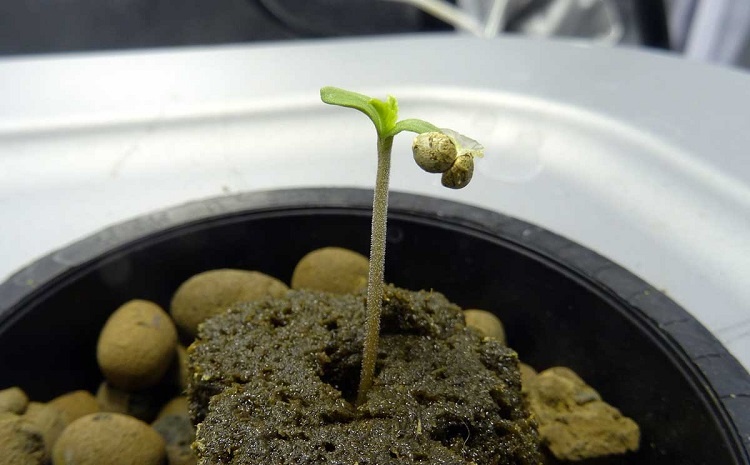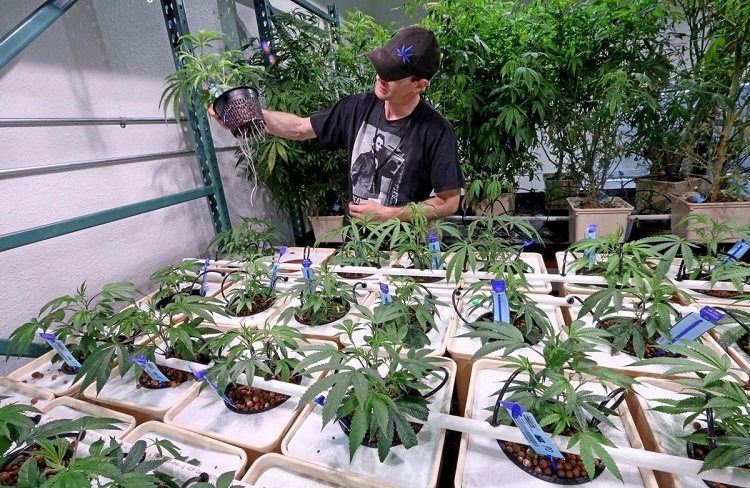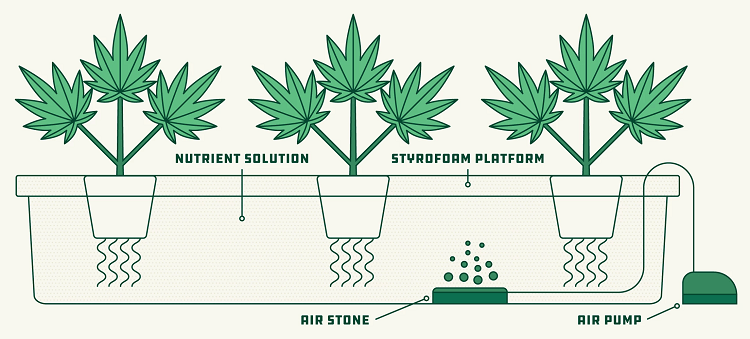
Growing cannabis with hydroponics has become increasingly popular due to the improved quality, faster harvest times and less effort required compared to soil. But what is the best hydroponic medium for growing cannabis? To answer this question we need to look at how different nutrient delivery systems affect plant growth as well as compare soil and hydroponics in terms of time, cost and effort. This post will examine the factors to consider when selecting an ideal hydroponic medium for attaining maximum yields from your plants.
Table of Contents:
- Understanding Hydroponic Mediums
- Comparing Soil and Hydroponics
- Choosing the Best Hydroponic Medium
- Nutrient Delivery Systems for Hydroponics
- Optimizing Your Hydroponic System
- FAQs in Relation to Best Hydroponic Medium
- Conclusion
Understanding Hydroponic Mediums
Hydroponic mediums are a must for any successful hydroponic setup, supplying the plants with needed support and holding both nutrient solution and oxygen. These media provide the necessary support for plants, as well as a reservoir for nutrient solution and oxygen. There are many types of growing mediums available to choose from, each with their own benefits and drawbacks.
Coconut fiber is a widely-utilized hydroponic substrate, boasting remarkable water retention and air permeability for optimal root growth as well as easy nutrient uptake. It has excellent water-holding capacity and provides good aeration to roots while also allowing nutrients to be easily absorbed by plants. Coconut fiber is a lightweight, convenient material that is beneficial to the environment.
Wick-type hydroponic systems use clay pellets or other porous material such as rice hulls or peat moss as the main growing medium instead of soil or coconut fiber. The benefit of this kind of setup is that it necessitates less upkeep than the customary strategies, with no need for frequent watering or fertilizing. Clay pellets allow for even distribution of moisture throughout the root zone which can help promote healthy plant growth without over-watering or under-watering issues associated with other systems like deep water culture (DWC) and nutrient film technique (NFT).
Expanded clay aggregate (ECA) is another popular choice among hydroponic gardeners, consisting of small pieces of fired volcanic glass formed into pellets which can replace soil in your system’s container gardens. Alternatively, trays filled with ECA act as wicks, drawing up nutrients from below while providing ample aeration due to its lightweight nature when compared to other hydro media such as coco coir. Furthermore, ECA has a neutral pH level making it suitable for both acidic and alkaline-loving plants alike. Keywords: Hydroponics, Clay Aggregate, Expanded Clay Aggregate (ECA), Neutral pH Level
Comprehending hydroponic media is a must for any successful gardener, and being aware of the contrasts between cultivating in soil and hydro can aid you to make an educated selection when choosing your favored approach. Comparing these two methods will provide insight into which one may be best suited for your individual needs.

Comparing Soil and Hydroponics
Comparing soil and hydroponic growing methods, each has its own benefits and drawbacks. Hydroponics is the practice of growing plants without soil, using a nutrient solution instead. This method requires more precise control over nutrients than soil-based gardening does, but it can be highly productive and efficient. Soil-based gardening can still be appealing to those who desire a more tactile experience, offering certain advantages.
Hydroponic systems employ a range of media such as clay pellets, coconut fiber or coir, peat moss and rice hulls to provide an environment conducive for roots to thrive while maintaining neutral pH levels. These mineral-rich mediums are necessary for the plants’ photosynthesis process; supplying vital minerals like nitrogen, phosphorus and potassium which can be absorbed by the root system from the nutrient solution. Thus enabling maximum productivity with precise control over nutrients – unlike soil-based gardening methods.
Soil provides a plethora of essential nutrients due to microbial activity which breaks down organic matter into usable forms for plants, making it easier for growers who don’t need such precise control over nutrients as they are naturally available. Furthermore, additional fertilizers can be added if needed to achieve optimal growth results. Moreover, soil serves as insulation against temperature fluctuations better than any synthetic mediums; when used correctly with mulch covering the topsoil layer – this reduces evaporation significantly and retains moisture longer periods of time allowing gardeners more leeway when tending their gardens unlike hydroponic systems where even slight changes in variables could spell disaster drastically affecting crop yields necessitating constant monitoring.
When deciding between these two types of growing methods one should consider what type best suits their needs. Whether you’re looking for fast harvests or higher yields, both techniques offer great potential depending on your goals as a gardener. No matter which option is chosen, the journey of gardening will bring a plethora of knowledge and experiences.
To make a well-informed decision, one must consider factors such as cost, space requirements, maintenance needs and environmental impact when comparing soil to hydroponics. Now we will explore the best hydroponic medium to use for your cannabis grow operation in order to achieve maximum yield with minimal effort.
Choosing the Best Hydroponic Medium
For optimal cannabis cultivation, the selection of a suitable hydroponic medium is critical. When picking a hydroponic medium for your cannabis grow, numerous components must be taken into account, including water holding capacity and oxygenation rates, pH balance, nutrient delivery systems and more.
Water Retention & Oxygenation:
Different types of media have varying degrees of water retention and oxygenation. Organic materials such as coconut coir or peat moss can hold onto moisture well while still allowing plenty of air flow around roots. On the other hand, inorganic materials like rockwool or expanded clay pellets are great at retaining moisture but not so much at providing aeration. It’s important to find a good balance between these two qualities depending on your particular needs as a grower.
pH Balance:
The pH level of your chosen medium will also play an important role in how successful your cannabis plants will be over time. Ideally you want to choose something that has a neutral pH level so that it doesn’t interfere with the natural processes occurring within the plant itself. If possible try testing different samples before making any final decisions about which one is right for you and your grow space environment .
Nutrient Delivery Systems:
Some hydroponic media offer specific advantages when it comes to delivering nutrients directly into root zones without having them leach out too quickly from watering cycles or runoff from rainwater etc For example, coco coir works very well with drip irrigation systems since its fibers can absorb large amounts of nutrient solution without causing clogging problems in tubes/lines used for delivery purposes .
Lastly, cost and availability need to be carefully considered before committing to any particular type of growing media, especially if buying in bulk. Research prices online first then compare against local stores near you who may offer better deals than what is available online, particularly if they have a discount card program associated with their store brand products.
Selecting an appropriate hydroponic medium is a key factor in achieving successful cannabis cultivation, since it can offer plants the necessary nutrients and bolster their root systems. With this in mind, let’s explore nutrient delivery systems for hydroponics to ensure your crop has everything it needs to thrive.

Nutrient Delivery Systems for Hydroponics
Nutrient delivery systems for hydroponics are the key to successful harvests. Different nutrient delivery systems have varying benefits and drawbacks, so it’s important to understand which one is best for your hydroponic system. To ensure a successful hydroponic harvest, it is important to select the right nutrient delivery system based on an understanding of its advantages and disadvantages.
The first type of nutrient delivery system is ebb-and-flow or flood and drain. This method involves flooding a tray filled with growing medium such as clay pellets or rockwool cubes with nutrient solution at regular intervals throughout the day. The excess water then drains away into a reservoir where it can be reused again later on in the cycle. Ebb-and-flow systems offer good control over root zone temperatures and oxygen levels, making them an ideal choice for beginners who want to get started quickly without too much fussing around with equipment settings. They also require minimal maintenance since all you need to do is top up the reservoir when needed and check that everything is working properly every few days or so.
With drip irrigation, you can precisely regulate the amount of nutrients supplied to crops, allowing for a tailored feeding plan and efficient water conservation. You can customize your feeding regimen according to the type of crop being grown and make sure they get just enough nourishment without wasting resources or going overboard with it. Furthermore, this system is more economical in terms of water usage since only tiny amounts are employed at any given time – unlike ebb-and-flow systems which utilize larger volumes. Keywords: Nutrient Delivery Systems; Drip Irrigation; Ebb-And-Flow System; Customize Feeding Regimen; Nourishment; Economical Water Usage
Finally, there’s deep water culture (DWC), which involves suspending plant roots directly into tanks filled with aerated nutrient solutions instead of using soil or another medium as support structure for them like other hydroponic setups do . DWC requires very little effort from growers; simply adding fresh oxygenated solution every now and then should keep things running smoothly while providing plants with plenty of access to vital minerals they need for growth . However , this method does require some additional monitoring due to its reliance on oxygenation ; if not done correctly , dissolved oxygen levels could drop below optimal levels resulting in stunted growth .
Overall, understanding how different types of hydroponic nutrient delivery systems work will help ensure that whatever setup you choose runs efficiently while still giving plants all they need to thrive. With careful selection and management, these versatile tools make it possible to achieve maximum yields regardless of whether you’re growing indoors or outdoors.
A comprehensive understanding of nutrient delivery systems is essential for successful hydroponic gardening. Maximizing the efficacy and output of your vegetation can be accomplished by adjusting your hydroponic system.
Optimizing Your Hydroponic System
Optimizing your hydroponic system requires careful consideration of the growing mediums you choose. Choosing the right growing medium for your setup is essential for optimizing your hydroponic system. Popular choices include coconut fiber, clay pellets, and expanded clay aggregate. Selecting the right medium for your setup depends on what you need; each one has its own unique properties. For example, coconut fiber provides excellent drainage while clay pellets retain moisture better than other media types. It’s important to choose a medium with neutral pH levels so as not to interfere with nutrient absorption by the plants in your garden.
Once you’ve selected an appropriate medium for your system, it’s time to think about how you will deliver nutrients and water to the roots of your plants. A popular choice among hydroponic growers is a water-based mineral nutrient solution delivered via drip irrigation or deep water culture systems such as aquaponics or NFT (Nutrient Film Technique). These systems ensure that each plant receives an adequate amount of nutrition without overloading them with too much at once. Additionally, they allow for easy monitoring and adjustment of nutrient levels throughout the growth cycle if needed.

FAQs in Relation to Best Hydroponic Medium
What is the best hydroponic growing medium?
The best hydroponic growing medium for cannabis cultivation is rockwool. Rockwool is a sterile, inert material that provides excellent aeration and water retention properties to the root zone. Rockwool also offers an ideal pH level, ranging from 5 to 6.5, which facilitates nutrient absorption by plants. Additionally, it can be reused multiple times with proper maintenance and sterilization practices in place. Ultimately, rockwool offers superior performance compared to other types of hydroponic growing media such as perlite or coco coir due to its durability and ability to retain moisture while providing adequate drainage and air circulation around roots systems – making it the optimal choice for cannabis growers who want maximum yields from their crop.
What is the most efficient hydroponic method?
The most efficient hydroponic method for cannabis growers is Deep Water Culture (DWC). This method requires minimal effort and time, while providing the highest yields. In DWC, plants are suspended in a nutrient-rich solution with their roots submerged directly into the water. An air pump provides oxygen to the root zone so that they can absorb more nutrients than traditional soil growing methods. Additionally, this technique allows for precise control of pH levels and nutrient concentrations, leading to healthier plants and higher quality buds.
What is the best substrate for hydroponics?
The best substrate for hydroponics is often debated, but there are a few that stand out. Coco coir has become increasingly popular due to its ability to hold water and nutrients while providing aeration. Perlite is also commonly used as it offers good drainage, air circulation, and insulation from extreme temperatures. Vermiculite provides an excellent balance of moisture retention and oxygen supply which makes it ideal for many plants in hydroponic systems. Ultimately the choice comes down to personal preference or what works best with your particular system setup.
What is the best inert growing medium?
The best inert growing medium for cannabis is coco coir. Coco coir is an organic, renewable resource that provides excellent aeration and drainage. It’s pH neutral, which makes it easy to adjust nutrient levels in the soil. Additionally, its buffering capacity helps prevent over-fertilization of plants by keeping nutrients from becoming too concentrated or leaching out of the root zone quickly. This makes it an excellent choice for cultivators seeking to establish a suitable equilibrium between fertilizers and water quality, without any adverse effects on their plants’ vigor or yield potential.
Conclusion
Consider factors such as nutrient delivery systems and time to harvest when selecting the right one for you. With careful planning and research, you will have an optimal system that produces high-quality yields in less time than traditional soil methods. Ultimately, choosing the best hydroponic medium can make all of the difference in achieving successful harvests.
Discover the best hydroponic mediums to grow your weed and learn from GreenBudGuru.com‘s expert-led tutorials, tips, and tricks for success! Unlock the secrets of growing cannabis with confidence today.
Originally posted 2023-03-15 19:00:00.


 James Alexander
James Alexander